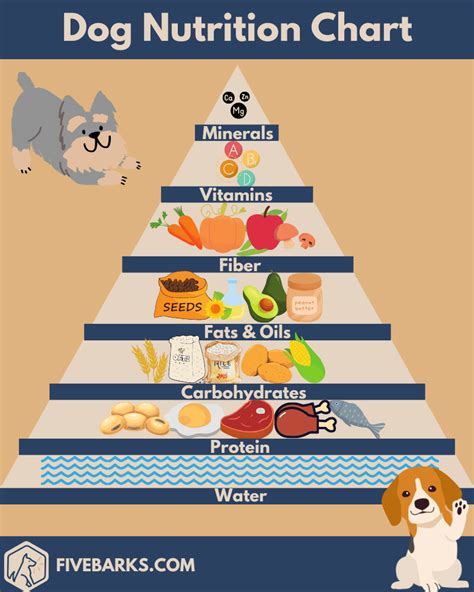Introduction
Nutrition plays a crucial role in maintaining the health and well-being of our beloved pets. By providing them with a balanced and nutritious diet, we can help prevent the development of various diseases and ensure their optimal quality of life.

The Importance of Pet Nutrition
According to the American Pet Products Association (APPA), Americans spent an estimated $38.4 billion on pet food and treats in 2022. This figure underscores the growing recognition of the importance of pet nutrition and its impact on their overall health.
Pet Nutrition and Disease Prevention
The link between proper nutrition and disease prevention in pets is well-established. Studies have shown that a nutritious diet can help:
- Reduce the risk of obesity: Obesity is a major health concern in pets, and it can contribute to several other diseases, such as diabetes, heart disease, and joint problems. A balanced diet helps maintain a healthy weight and reduces the risk of these associated conditions.
- Strengthen the immune system: A nutrient-rich diet can help boost the immune system of pets, making them more resistant to infections and diseases.
- Improve skin and coat health: The nutrients in a well-balanced diet contribute to healthy skin and a lustrous coat.
- Promote healthy bones and joints: Calcium and other nutrients are essential for maintaining strong bones and preventing joint problems.
- Prevent dental disease: A balanced diet can help reduce plaque and tartar buildup, leading to healthier teeth and gums.
Common Nutritional Deficiencies in Pets
While commercial pet foods are generally formulated to provide a complete and balanced diet, nutritional deficiencies can still occur. Some common deficiencies include:
- Protein deficiency: Protein is essential for muscle growth and repair, as well as for the production of enzymes and hormones. A lack of protein can lead to weight loss, lethargy, and decreased immune function.
- Vitamin A deficiency: Vitamin A is important for vision, skin health, and immune function. A deficiency can cause night blindness, dry skin, and increased susceptibility to infections.
- Calcium deficiency: Calcium is essential for strong bones and teeth. A deficiency can lead to osteoporosis, bone fractures, and dental problems.
- Iron deficiency: Iron is necessary for the production of red blood cells. A deficiency can lead to anemia, which can cause fatigue, weakness, and pale gums.
Choosing the Right Pet Food
Selecting the right pet food for your pet is crucial for their health and well-being. Here are some factors to consider:
- Age: Pets have different nutritional needs at different stages of life. Puppies and kittens require a diet higher in protein and calories than adult pets. Senior pets may need a diet tailored to their reduced activity levels and potential health concerns.
- Activity level: Active pets need more calories and nutrients than sedentary pets.
- Health conditions: Pets with certain health conditions, such as kidney disease or diabetes, may require a specialized diet.
- Ingredients: Look for pet foods that are made with high-quality ingredients and avoid those with fillers, artificial flavors, or by-products.
Feeding Your Pet
The frequency and amount of food you should feed your pet will depend on their individual needs. Generally, puppies and kittens should be fed three to four times a day, while adult pets can be fed twice a day. The amount of food should be adjusted based on your pet’s age, weight, and activity level.
Conclusion
Providing your pet with a nutritious and balanced diet is essential for their overall health and well-being. By understanding the importance of pet nutrition and making informed choices about their food, you can help prevent diseases and ensure your furry friend lives a long and healthy life.
Additional Tips for Pet Nutrition and Disease Prevention
- Regular veterinary check-ups: Regular veterinary check-ups can help identify any potential health issues early on, including nutritional deficiencies.
- Avoid table scraps: Giving your pet table scraps can disrupt their balanced diet and lead to weight gain and other health problems.
- Fresh water: Always provide your pet with plenty of fresh water to stay hydrated.
- Oral hygiene: Regular brushing and dental check-ups can help prevent dental disease and improve your pet’s overall health.
- Exercise: Regular exercise is essential for maintaining a healthy weight and preventing obesity-related diseases.
Tables
Table 1: Common Nutritional Deficiencies in Pets
| Deficiency | Symptoms |
|---|---|
| Protein | Weight loss, lethargy, decreased immune function |
| Vitamin A | Night blindness, dry skin, increased susceptibility to infections |
| Calcium | Osteoporosis, bone fractures, dental problems |
| Iron | Anemia, fatigue, weakness, pale gums |
Table 2: Benefits of a Balanced Diet for Pets
| Benefit | Description |
|---|---|
| Reduced risk of obesity | Helps maintain a healthy weight |
| Strengthened immune system | Boosts immunity and reduces susceptibility to infections |
| Improved skin and coat health | Contributes to healthy skin and a lustrous coat |
| Promoted healthy bones and joints | Provides essential nutrients for strong bones and healthy joints |
| Prevented dental disease | Helps reduce plaque and tartar buildup |
Table 3: Choosing the Right Pet Food
| Factor | Considerations |
|---|---|
| Age | Puppies and kittens need a diet higher in protein and calories than adult pets |
| Activity level | Active pets need more calories and nutrients than sedentary pets |
| Health conditions | Pets with certain health conditions may require a specialized diet |
| Ingredients | Look for pet foods that are made with high-quality ingredients and avoid those with fillers, artificial flavors, or by-products |
Table 4: Feeding Your Pet
| Age | Frequency | Amount |
|---|---|---|
| Puppies and kittens | 3-4 times a day | Adjust based on age, weight, and activity level |
| Adult pets | 2 times a day | Adjust based on age, weight, and activity level |





















